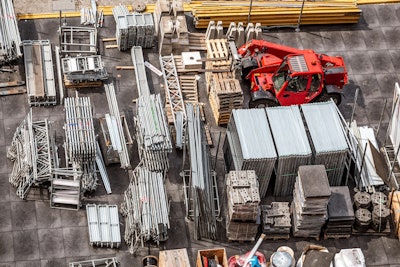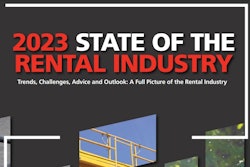
Linesight, a global construction consultant firm, has released its Q4 Commodity Report, which makes predictions on materials pricing through the start of 2023. The report notes that growth in the industry has been slowed by high input costs, rising interest rates, inflationary pressures and supply-chain issues. Those challenges will be eased by upcoming and ongoing infrastructure projects, as well as government investments in housing. From 2023 to 2026, the construction industry is expected contract.
 Linesight
Linesight
Key findings of the report include:
- Economic slowdown is expected to continue into 2023
- Inflation is cooling off (6.2% in 2022) but will remain higher than normal, with an average of 4.7% expected for 2023, and will continue to push wages higher
- The rate of unemployment is low, but is expected to increase in the next few months due to lower economic sentiment and reduction in spending, though this should not affect the cost of labor for mission-critical and life sciences work, where a shortage of skilled labor will continue
- From an equipment standpoint, short supplies of electrical steel are causing issues with transformers
- Rising demand for aluminum, copper, and nickel will drive prices up on electrical and construction projects
- Interest rates and recession fears may apply downward pressure on copper prices in the short term, but this will be offset by investment in the transition to clean energy
The report cautions that inflation, a possible economic downturn and China’s stance on COVID protocols will keep prices high throughout the year. In 2023, the construction industry is expected to shrink by 7%.
 Linesight
Linesight
“This contraction is worse than the previous estimate of 4.3%, because growth is being hampered by high input costs, rising interest rates, inflation, and supply chain issues," said Patrick Ryan, executive vice president for the Americas at Linesight. "While demand for most key commodities in the United States is expected to ease in the coming year, rising input costs, high energy prices and other challenges are expected to offset this. On the bright side, investments by the government in housing, transportation and manufacturing through 2026 should stimulate growth at an average annual rate of 3.7%.”
 Linesight
Linesight
Commodity Pricing
While demand for materials is expected to decrease as the industry contracts, some prices are expected to stay high due to inflation and supply chain issues.
- Asphalt: A recent drop in oil prices has reduced costs for producers. As spending on infrastructure projects starts to ramp up again, growth in demand is expected to keep prices relatively elevated, according to the report.
- Bricks: Housing starts have been steadily declining since February and there has been a decline in refurbishment work. However, supply-side pressures have persisted, contributing to the continued upward trend in brick prices. The producer price index for brick manufacturing was up by 15% year on year in November. Ongoing weakness in demand will limit further upward pressure in the coming quarters.
- Cement concrete: Despite weaker demand in the residential construction sector reflected in a drop in housing starts, cement and concrete prices continued on an upward trend in late 2022. This primarily reflects higher production costs; the producer price index for cement and concrete manufacturing was up by 15% year on year in November 2022. However, demand-side price pressure is expected to ease. The Portland Cement Association (PCA) estimates that demand will decline by 3.5% in 2023.
- Copper: Copper prices rose in Q4 2022, reflecting in part supply disruptions and an expectation of a demand boost from the re-opening of the Chinese economy. Recession fears and the Fed’s interest rate hikes will apply downward pressure on copper in the short term, but this will be offset by investment in the energy transition and concerns over tight supply.
- Diesel: Diesel prices dropped below $5 per gallon in December, and will continue to decline from recent highs. The Energy Information Administration, in its December Short-Term Energy Outlook, lowered the forecast for the average 2023 retail diesel price by 17 cents to $4.48 per gallon, falling 11% from the expected full-year 2022 average of $5.05 per gallon owing to high refinery utilization.
- Drywall: High production costs contributed to a steady rise in drywall prices in late 2022, along with restocking efforts by building material suppliers. However, with the residential building sector continuing to decline, demand-side price pressures will ease in 2023.
- Limestone: Prices for limestone will remain relatively stable in the near future, with weaker demand being offset by continued high production costs.
- Lumber: As the housing market has slowed, price pressure has eased and stockpiles have been replenished. After significant supply setbacks in Canada caused by forest fires and flooding in early to mid-2022, producers have rebuilt stock levels. Prices are expected to decline further in the near future given the gloomy outlook for housebuilding demand.
- Steel: Steel prices continued to fall in late 2022, reflecting underlying weakness in demand, and the lack of new investment in infrastructure recently. The drop in European demand and the stronger dollar will further add to negative pressure. Public investment programs such as the Investment Infrastructure and Jobs Act, the CHIPS and Science Act, and the Inflation Reduction Act, will help to boost the demand in coming years
- Stainless steel: Despite weak demand, stainless steel prices have come under upward pressure owing to higher raw materials prices.
- Welded mesh: Similar to the steel price trend, the price of welded mesh is set to fall steadily.
 Linesight
Linesight
“China’s relaxation of its zero-COVID policy is expected to drive demand for commodities globally, helping to maintain elevated commodity inflation rates,” Ryan said. “With the market unsteady and even as it slowly recovers, risk management and smart procurement are just as important as ever. Commodity prices have still not returned to pre-pandemic levels, and the skilled labor shortage is ongoing, so companies looking for an edge in the current volatile market should seek the best and most knowledgeable consultants available. President Biden’s new Buy American policy for Infrastructure Construction, announced this week in his State of the Union address, is likely to have an impact on commodity pricing, increasing demand for certain commodities, though this impact is uncertain and should be monitored over the next year.”
 Linesight
Linesight
The report was compiled based on data from ENR, IMF, GlobalData's Construction Intelligence Center, Federal Reserve economic data and the Bureau of Economic Analysis.



















